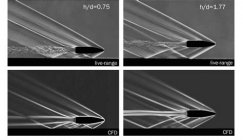dellet
Gold $$ Contributor
Having an idea and selling isn’t always about salemsnship. There is some timing involved. My wife’s grandfather patented the Spork. Couldn’t get any takers. Let the patent run out. Few years after that, I think it was an airline that picked it up or someone else presented it to them.Glad you liked, I was concerned that I have sounded a little over the top that is why I referred to it as an academic spanking. I did get a little nasty with some points that an academic will see and in this case just gloss over as we are all wrong and he is right. Evidence his bullet's amazing ability is in the computer sims and not on the target where we are concerned about.
I received a patent years ago for an idea that worked out fantastically in the computer sims, but failed miserably when we tested and tested and retested ... The world is littered with physical ideas that worked out so well inside the computer but failed miserably outside, I claim ownership of more than one of those. We filed that patent before we could get our hands on the equipment to test it was not our intent to patent an idea that we knew failed in the field.
A swing and miss, next guy hits a home run on the same pitch.














